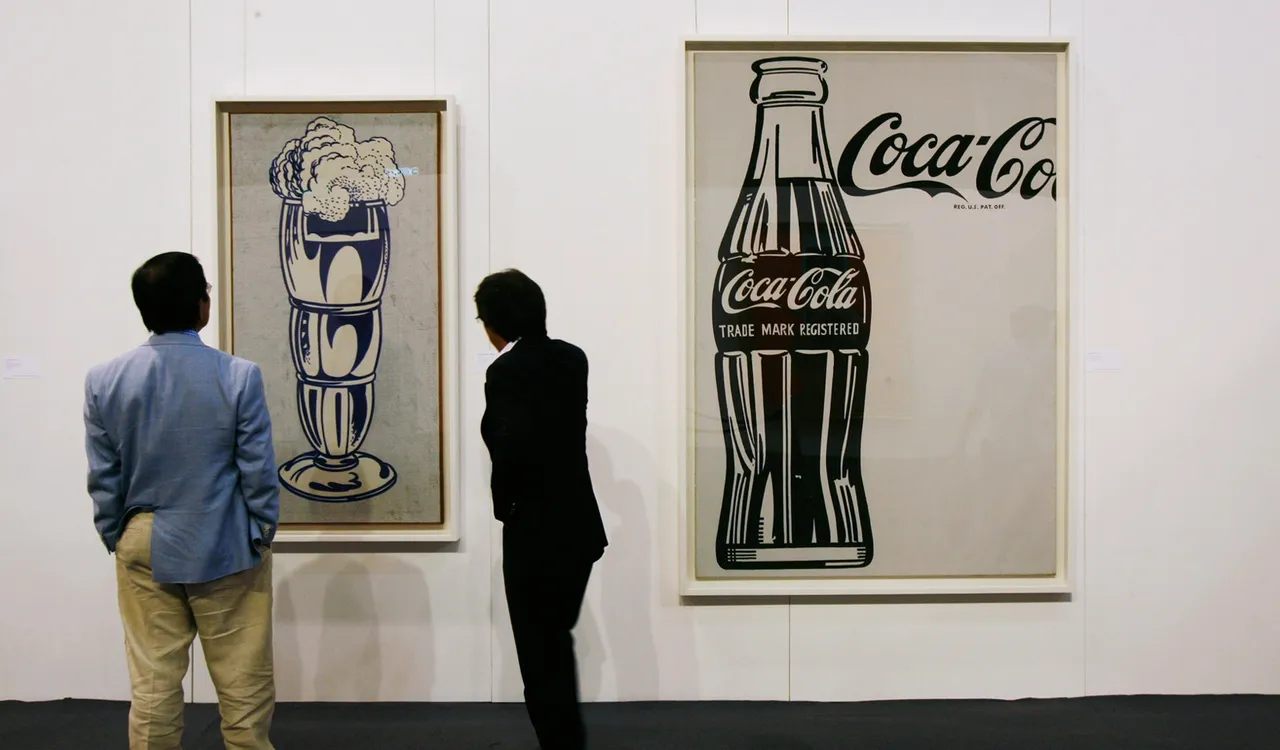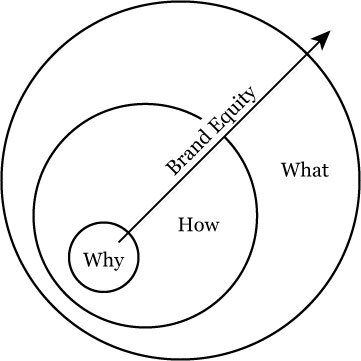What is a Brand Management System (BMS)?

A Brand Management System (aka BMS), supports Brand Management and is a combination of formal processes, tools, and resources adopted by an organization to manage its brand.
The role of a BMS is to provide brand managers the tools to manage, protect and share their Brand Story, Brand Standards and Brand Assets, with the people required to implement the brand - in order to increase brand equity (or Value) over time.A BMS is typically a software solution. Think of it as a CMS (content management system) for brand and marketing resources.
A BMS is primarily concerned with managing and sharing 3 core brand components:
- The Brand Story
- Brand Standards and Guidelines
- Brand Assets
Why a Brand Management System?
Why every CEO must consider a centralized Brand Management System?
Your brand - is a name and an idea.
An idea in the mind of the customer - represented by your brand name, logo and supported by your brand story, messaging, collateral and other branding activities. The best brands are simple, well defined and differentiated.
Esprit de Corp
One of the most important messages a CEO must present is what your brand stands for.
It is vital that the CEO, management, and staff all share a common understanding of the brand idea.
- Why do we exist?
- What idea do we stand for?
- How do we as a company present our face to the world?
- What promise do we make to our customers, partners, and staff about what they will experience when dealing with us?
- How are we different from everyone else?
- What is the brand identity that communicates those attributes?
By presenting a single unified idea about what your company is, does, how it behaves, how it looks, everybody involved can get their thinking aligned in one direction. It’s then vital to communicate and reproduce the brand experience and identity consistently for an extended period of time.
Respect
Once established, a brand must demand respect.
This means staying true to the core brand idea, applying brand identity consistently over a long, long time, resisting frivolous and unnecessary change and demanding that users of the brand reproduce it correctly and exactly as originally specified.This requires a strong constitution, a shared belief in the brand and a formal system to ensure consistency.
A laissez-faire approach to managing brand identity and supporting brand assets just won’t cut it.A formal BMS system requires:
- Users to follow established procedure.
- Tell the same brand story.
- Use correct and up-to-date artwork.
- Comply with your brand standards.
- Respect our intellectual property.
When we care about the details, we take a particular posture - the mere existence of a formal system says:
“This is our brand. This is how it is to be used. Don’t mess with it.”
Without respect:-
- They’ll abuse you and your logo.
- Won’t care about your brand rules or where they put it.
- May get it all wrong, wrong colours, wrong font, squished, squashed - ruined.
Time Savings
When you’re a medium to large size company, hierarchy and bureaucracy can often get in the way of efficient business practices. This applies to the brand story, brand standards, brand identity assets, logo artwork, images, marketing collateral, and media assets as much as any other business information.
As CEO you need to look at ways your organization can be more productive at every level.
“A commonly used estimate of the amount of time used to search for a file is three minutes and the searched for file is not found 40% of the time.”
A commonly used estimate of the amount of time used to search for a file is three minutes and the searched for file is not found 40% of the time. The estimate of the number of searches done in a typical year is 2,500 per person. That equates to 15.5 man-days in 200 for searching. Obviously, searches will continue regardless of whether or not a system is in place and time doing it will continue to be spent.” (From the white paper “Assessing the Value of DAM Systems for Advertising Agencies)
With a brand management system in place, staff and trusted external users can find and access artwork, images and marketing collateral when needed without delay and without compromising brand standards.
A good brand management system saves time with:
- Sharing the Brand Story
- Communication of brand standards.
- Effective meta-data and fast accurate search.
- Permission-based self-service access.
- Ability to deliver brand assets globally on demand.
- On-demand access to valid and up to date artwork and collateral.
- Automatic delivery of brand usage guidelines.
Time To Market
Time to market can be critical in a competitive environment.
Branding and Marketing are notorious for deadline pressure, missed deadlines and late nights.
How often have you heard a plea late in the day for your logo artwork or some other brand material?When generating new branding activities, marketing or advertising collateral, there are education and distribution processes that have to take place.
The creation and delivery of media-kits or project resources is time-consuming and costly.
A good brand management system will:
- Automate notification and distribution of new collateral to trusted users.
- Deliver new material electronically near-instantaneously to everyone.
- Provide on-demand zero-wait access to new brand material.
- Render couriers obsolete.
- Be available 24x7.
Costs
Research in the US found that 2/3rds of all studio time was spent in re-creating artwork or collateral that had previously existed - but couldn’t be found, was too hard to retrieve, or nobody remembered that it already existed.
“A typical consequence for not having a brand asset readily available is usually a recreation of that asset or additional time spent hunting down acceptable art.”
A typical consequence for not having a brand asset readily available is usually a recreation of that asset or additional time spent hunting down acceptable art. One conservative estimate calculates the replacement value of each asset at $100. If art must be redone for the 1000 or so assets not found (40% of 2,500), and each is nominally valued at $100, the result would be a $100,000 ROI calculation. While this is not a bad starting point to assess your own savings, the truth is that companies with successful brand management system implementations are easily achieving this and more. (From the white paper “Assessing the Value of DAM Systems for Advertising Agencies)
While re-creation costs can be massive, lost staff time, distribution costs and opportunity costs drive up the real costs of poor brand asset management.
A good brand management system will:
- Provide a single easily search-able library of brand identity assets and collateral.
- Supply original source artwork and derivative versions on demand.
- Provide staff and trusted users simple fast on-demand discovery and access.
- Allow staff to take advantage of branding opportunities without organizational friction.
- Show staff and trusted users what already exists.
- Reduce waste and unnecessary cost.
### What! No P&L?
Your company has probably spent a significant amount of money on establishing your brand, investing in brand identity, marketing collateral, signage, and advertising, to get where you are today.
As a result, your brand is an incredibly expensive and valuable intangible asset.You may have recognized value in your balance sheet (most don’t).
However, like the majority of companies, you probably won’t see a P&L entry for brand management, brand defense or brand maintenance. You probably don’t have a cost-center for the brand. It’s far more likely to see advertising or marketing or a derivative of those. The true costs are generally hidden in the HR budget or agency fees.
This may be partly because you have no formal brand management system with a demonstrative cost.
With a formal brand management system in place, particularly a third-party solution, you will be able to clearly see what the real costs are and you’ll even be able to expense or capitalize the costs of purchasing and operating a system depending on your situation.
While it will not typically be a significant number in your financials. Your brand is such an important item in terms of the overall long term performance and valuation of your company - it deserves its place in the annual report. Doesn’t it?
Risk Management
Brands are very important but easy to destroy.
Brands need constant attention and nurturing. Negligence and a failure to keep the brand and brand identity true will lead to a watered-down (weaker) brand. A weak brand becomes harder and harder to defend and an easy target for competitors.
Some of the risks:
- The logo is ‘tweaked’, colours changed, graphics played with.
- Nobody’s quite sure if it’s the same brand anymore.
- The tag-line changes too often and the original meaning of the brand is lost.
- Logo treatment changes from ad to ad, brochure to brochure. The power of consistent repetition year-in-year-out is lost.
- The logo is reproduced by a junior staff member using an alternative unapproved tag-line, which leads to customer concerns that you’re changing your business model and then account managers time in allaying concerns.
- An external user reproduces your logo on an unapproved website which undermines your premium market position.
- One of your creative agencies designs a new treatment of the logo and brand. Looks great but risks destroying years of hard-won brand awareness and equity.
To defend a brand is not rocket science. It’s not art. It takes discipline.
Brands once established need to be defended …and the best defense is offense. Well not literally offense - but proactive delivery of the correct brand standards and original brand identity artwork and collateral, at the right time.
A good brand management system will:
- Make a positive statement about your brand.
- Draw a line in the sand about what is acceptable and what is not.
- Provide trusted users with the correct files and instructions on use.
- Support sign-off requirements.
- Demand adherence to your brand standards.
Independence From Creative
They’re some of your most valuable assets. It’s time you took control of them.
More often than not you need to work with a designer or ad agency to develop brand creative, images and marketing materials.
However many companies rely on their creative partners to also manage the brand asset and other collateral on the brand owner’s behalf. This is inherently risky, particularly if you employ multiple creative suppliers.
- Do you need to contact the agency/designer each time you need some original artwork?
- Who has the original file?
- Who has the latest version?
Creative suppliers are more than happy to manage brand assets for you, whether they are charging you for access or not. It makes their job easier and helps to cement or ‘lock-in’ the relationship they have with you. But, what happens when you want to change suppliers or bring in someone with new ideas?
A good brand management system will:
- Provide a central brand asset repository that all your staff and trusted creative suppliers can access.
- Allow creative suppliers to publish new brand assets to the central repository.
- Provide an approval process for new assets.
- Give you back control over your brand assets.
Knowledge Transfer
In informal brand management systems - a lot of the corporate brand knowledge lies with key marketing staff.
In addition, a look at many marketing teams will reveal that the average tenure of a marketing executive is around 18-24 months.
- The average tenure for CMOs: 22.9 months (at the top 100 branded companies).
- Only 14% of CMOs for top global brands have been with their present company for more than three years.
- Nearly 50% of CMOs for top global brands are within 12 months of being on the job.
(CMO = Chief Marketing Officer. Statistics from global executive search firm SpencerStuart’s report “CMO Tenure: Slowing down the revolving door”)
Clearly, a formal system that captures the company’s knowledge about its brand, brand standards, brand identity assets, and usage history is essential to ensure the brand can survive personnel changes, new agendas, empire building, well-intentioned creative initiatives and the challenge of constant change.A good BMS system will:
- Centrally capture your brand story, brand standards, brand identity assets, collateral, and branding activity.
- Avoid the situation where important files are stored in personal files systems and lost when the person leaves or is deleted by IT staff.
- Provide a history of brand asset usage.
- Record and manage trusted users.
- Communicate the brand story, brand standards and what brand assets and branding collateral exist.
- Elegantly handle the handing over of the keys to the castle.
Summarizing the Why - Your Brand Needs Love And Respect
Your brand needs constant love and attention and you must be absolutely consistent. Strong brands grow by staying true.
You also should want respect for your brand, as you would most likely show respect for other well established and well-managed brands.
Would you consider screwing with the Coca-Cola logo? Not likely, the threat of commercial consequences or legal action from a large brand with deep pockets is a likely deterrent. We’re not suggesting you hire a team of lawyers - but you do need to create the right conditions, the correct posture, in order to demand that others respect your brand.
This means setting the tone, communicating a strong and focused brand position, being clear about what your brand stands for and establishing rules and systems to ensure your brand is reproduced in its original unadulterated form.
A good brand management system is an essential tool to ensure your brand survives and prospers.Respect the brand …and brand happy :)
What does a Brand Management System include?
Brand Management Systems (typically software) includes functionality and processes to manage and share the 3 main components of a brand, with the aim of building brand equity, over time.

1. Your Brand Story - your ‘Why’.
A brand is an idea, a concept, a story. Sometimes fresh and new, often well-formed and established. It always has a start, an origin, a blueprint. Preserving or establishing that blueprint and communicating it to the people who must implement the brand is vital.
- What’s your brand’s story?
- Why do you exist as a brand?
- Does everyone understand your ‘why’?
- How do you introduce new staff to your brand?
- What about partners, resellers?
- Do your customers get it?
Documenting and sharing the Brand Story is the core, of an effective brand management system. Your Brand Management System (typically Brand Management Software) should include functionality to centrally store and disseminate your Brand Story.
We’ve got some tips on how to create or refine your Brand Story.
Also see: Why (a Ted Talk by Simon Sinek)
2. Your Brand Standards - your ‘How’
Brand Standards are about documenting and prescribing how you express and communicate your brand, to management, staff, customers, supplier and anyone else that’s interested.
They should include your brand’s personality, how you behave, your brand’s visual identity, colours used, how signage is used, your brand’s voice, how to use your brand assets and host of other details.What’s most important is that once you decide what those standards are, that your staff, partners and resellers understand and implement these standards consistently at every brand touchpoint.
A good Brand Management System will help centralize and disseminate these Standards (or rules of engagement) automatically as people interact with your brand management system or software.A key benefit of a good Brand Management System is providing everyone with a single source of truth.
Typically your Brand Standards are encapsulated in a Brand Standards Manual or document with a number of different names in common use, including:
- Brand Guidelines
- Visual Identity Guidelines
- Style Guide
- Corporate Identity Standards
- Brand Book
- etc.
Additional reading:
What to include in Brand Guidelines: 5 essential rules
3. Brand Assets - your ‘What’
Once you know why and how you’ll need to create and manage the ‘What’. The ‘What’, being the brand and marketing assets deployed in communicating, promoting your brand and/or selling your products and services. Typically these include:
- brand story copy and messaging
- brand standards or brand guidelines
- logos and brand identity elements
- images and video
- artwork and graphics
- presentations
- stationery
- signage
- ads
- templates
- designs
- etc.
Typically Brand Assets will be managed and distributed via Brand Asset Management software (such a Brandkit for example), designed to securely store, catalog, manage and distribute your brand assets to authorized brand users.
Happy Branding 🙂
What is a Brand Management System?
Brand Management Systems - What, Why, How - almost everything you need to know. This article explores Brand Management Systems (BMS), software solutions that streamline managing brand assets, stories, and standards. BMS ensures brand consistency, simplifies sharing guidelines, and enhances brand equity for organizations over time.


